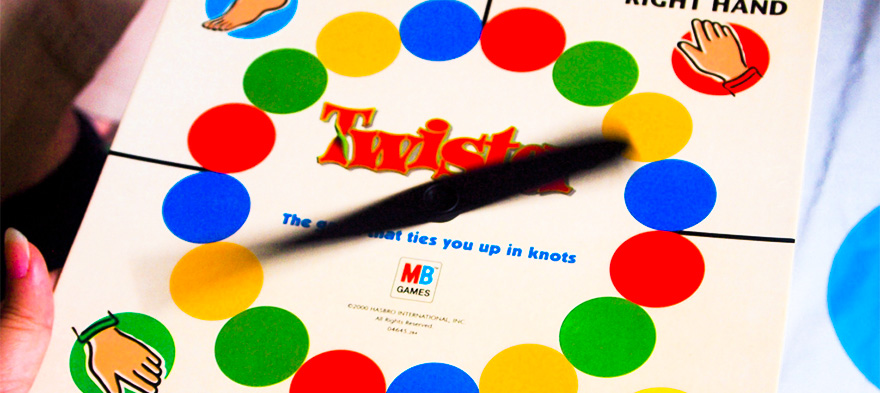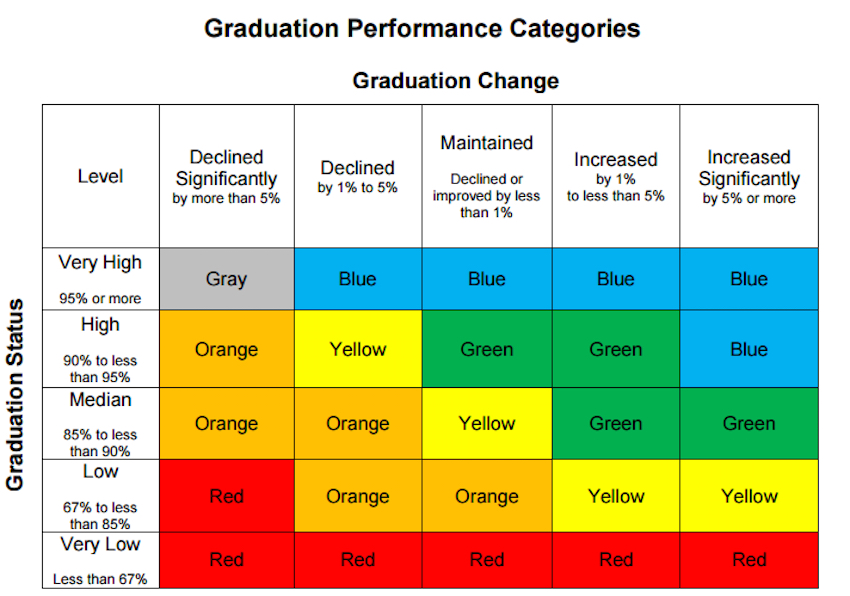
Jul 27, 2016 12:00:00 AM
There are nine different categories for measuring schools, with only one of those being how its students scored on the standards tests. Others include “basics” (such as having adequate textbooks and facilities) and “implementation of academic standards.” Each category is ranked by how high a priority it is for that particular school. And each category has two colored boxes. And there are six possible colors for each box. We’ve got this much: Green is good. Red is bad. Yellow is somewhere in between. Just like traffic lights. It’s hard to ascertain what the rest mean, but there’s a separate chart showing all the colors that is supposed to give you an idea of what they stand for. But it doesn’t, really.Got that? For all the detail the report cards provide (not to mention they burst with colors not out of place in a game of Twister), parents still can’t get a succinct answer to their most pressing question: Is this a good school?
 In attempting to evaluate schools with more nuance, the board has overcorrected to the point of opacity. Categories and numbers and colors blur together so the data cease to mean anything:
In attempting to evaluate schools with more nuance, the board has overcorrected to the point of opacity. Categories and numbers and colors blur together so the data cease to mean anything:
One reason the charts are so over-complicated is that they’re being larded with too many factors that don’t reveal how well students are learning. Among the elements being judged: parent involvement, suspension rates, graduation rates and the like. These may be important aspects of school life, but they are a means to an end—better-educated students. If a school doesn’t suspend any students, but also doesn’t improve academic outcomes, why should it get credit for hollow achievements?The cards are yet more evidence of California’s unwillingness to make education data transparent, obtainable and easy to understand for all. Despite three years of work, much remains to be done, says Smith. “We still have to figure out performance standards. We need to be clearer about what triggers supports and interventions when we see one or more subgroups are not performing. Those things are still unclear.” The board has about two months to fix the report cards and establish an accountability system that has been missing for three years. This mishmash of boxes, numbers and colors doesn’t bode well for California’s schools.
Caroline Bermudez is chief storyteller at the Charter School Growth Fund and former senior writer at Education Post. Bermudez has been a journalist for almost 10 years. She was staff editor at The Chronicle of Philanthropy, covering the nonprofit world, with a particular focus on foundations and high net-worth giving. She has interviewed prominent business, political and philanthropic leaders including Colin Powell, Ronald Perelman, Carl Icahn, Patty Stonesifer and Eli Broad. She also assisted with The Chronicle's Philanthropy 50, its annual ranking of America's most generous donors. A proud graduate of Chicago Public Schools, she has a B.A. in history from Swarthmore College.
The story you tell yourself about your own math ability tends to become true. This isn’t some Oprah aphorism about attracting what you want from the universe. Well, I guess it kind of is, but...
If you have a child with disabilities, you’re not alone: According to the latest data, over 7 million American schoolchildren — 14% of all students ages 3-21 — are classified as eligible for special...
The fight for educational equity has never been just about schools. The real North Star for this work is providing opportunities for each child to thrive into adulthood. This means that our advocacy...
Your donations support the voices who challenge decision makers to provide the learning opportunities all children need to thrive.
Ed Post is the flagship website platform of brightbeam, a 501(c3) network of education activists and influencers demanding a better education and a brighter future for every child.
© 2020–2024 brightbeam. All rights reserved.
Leave a Comment